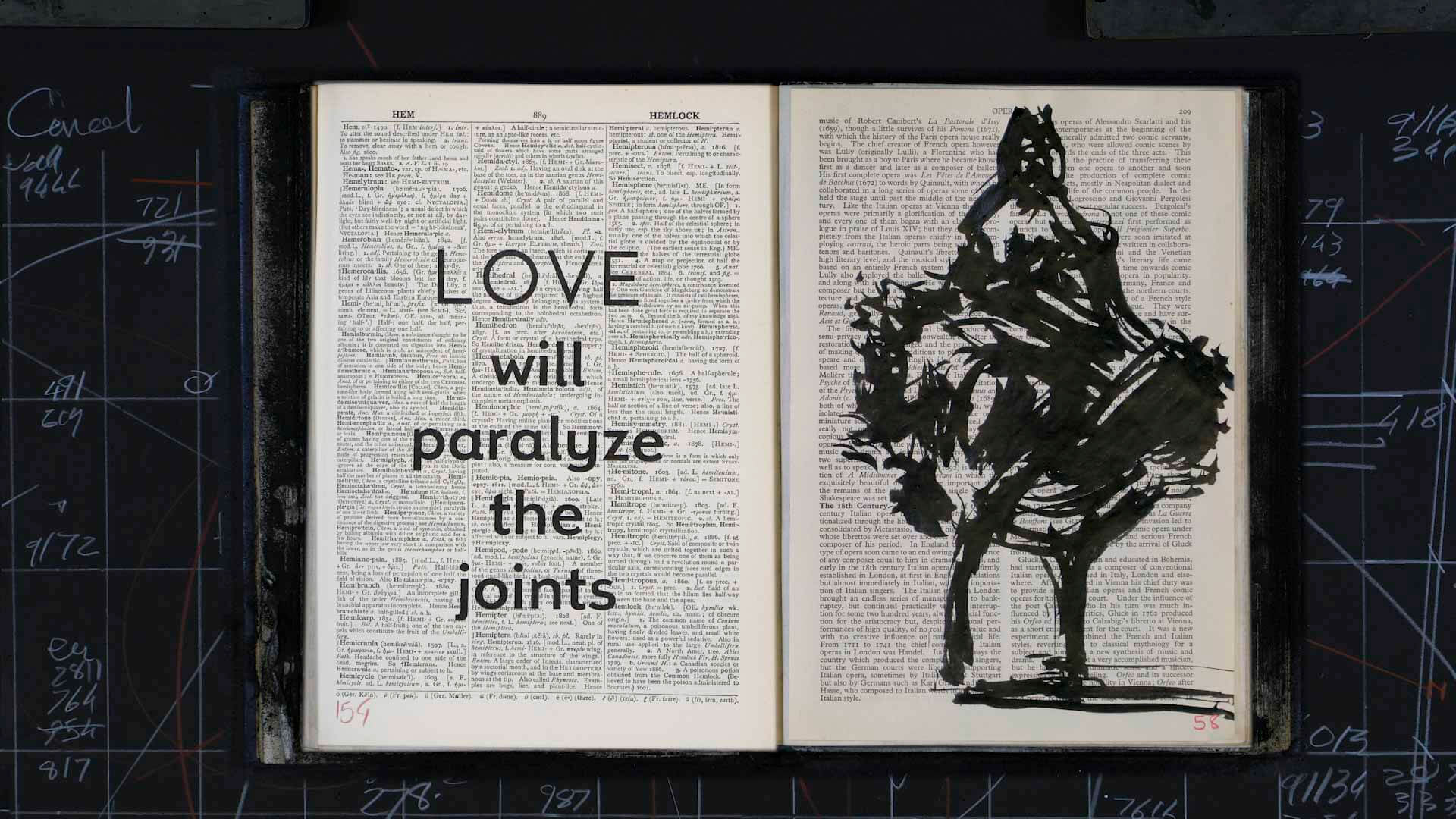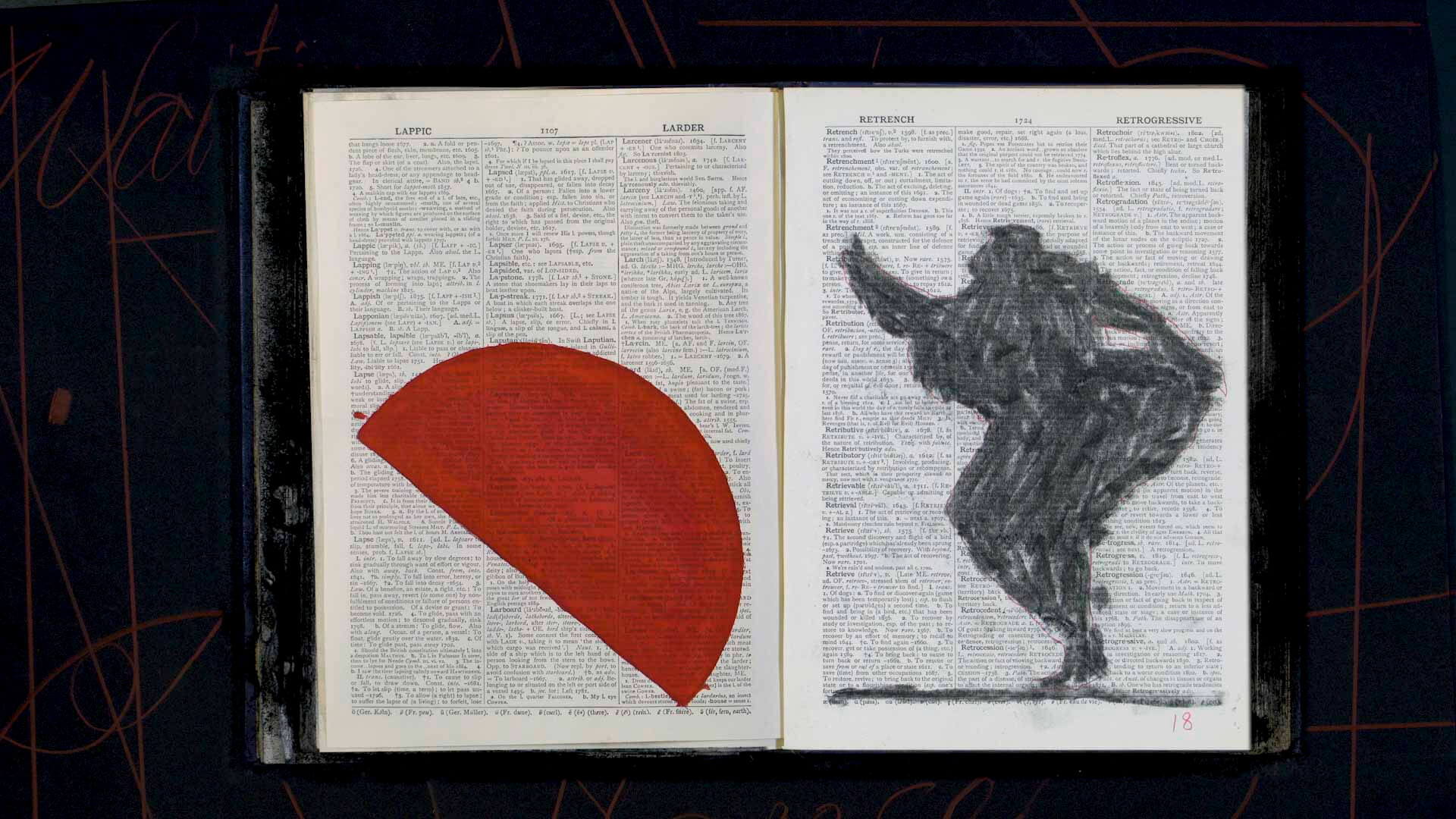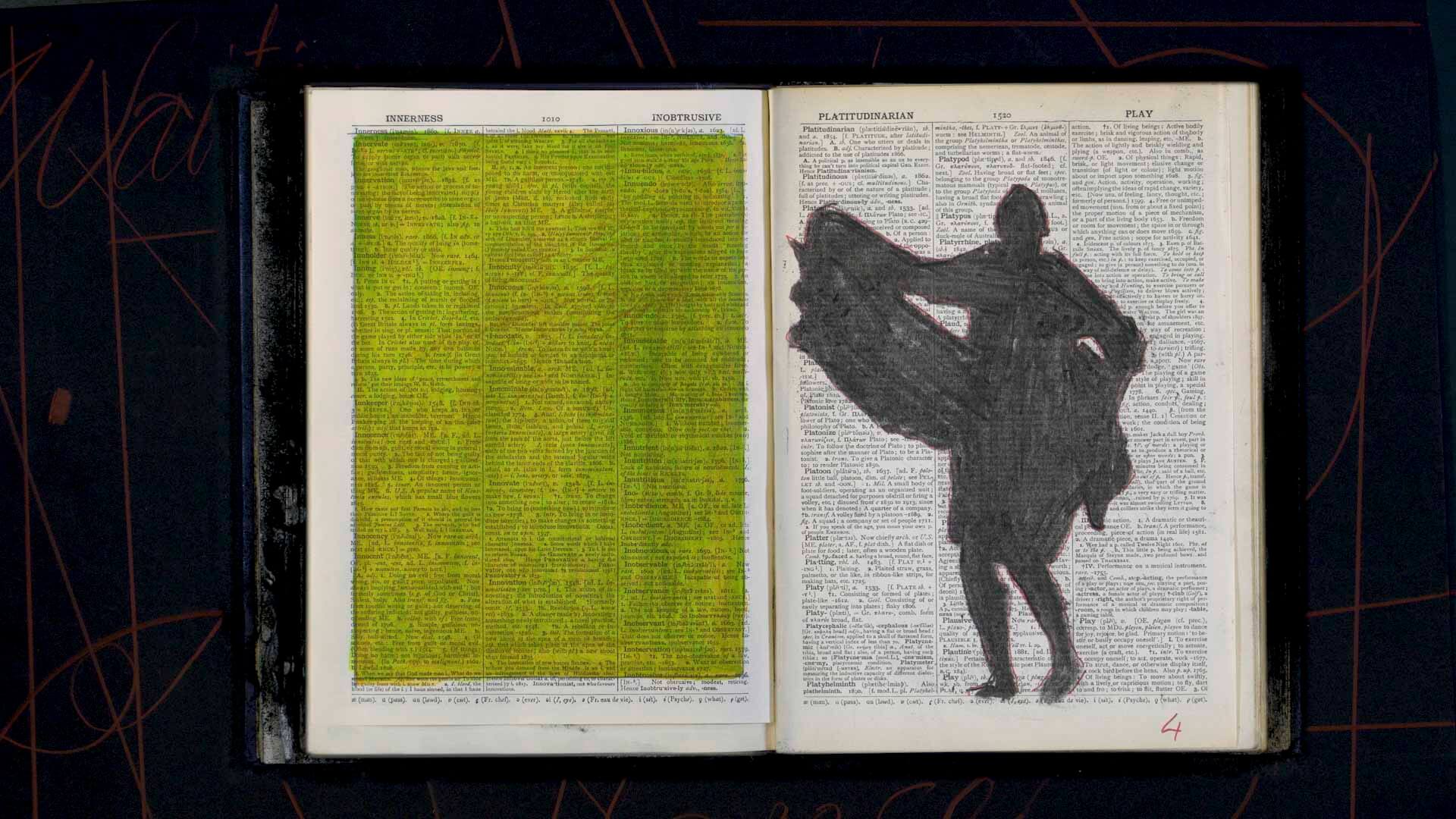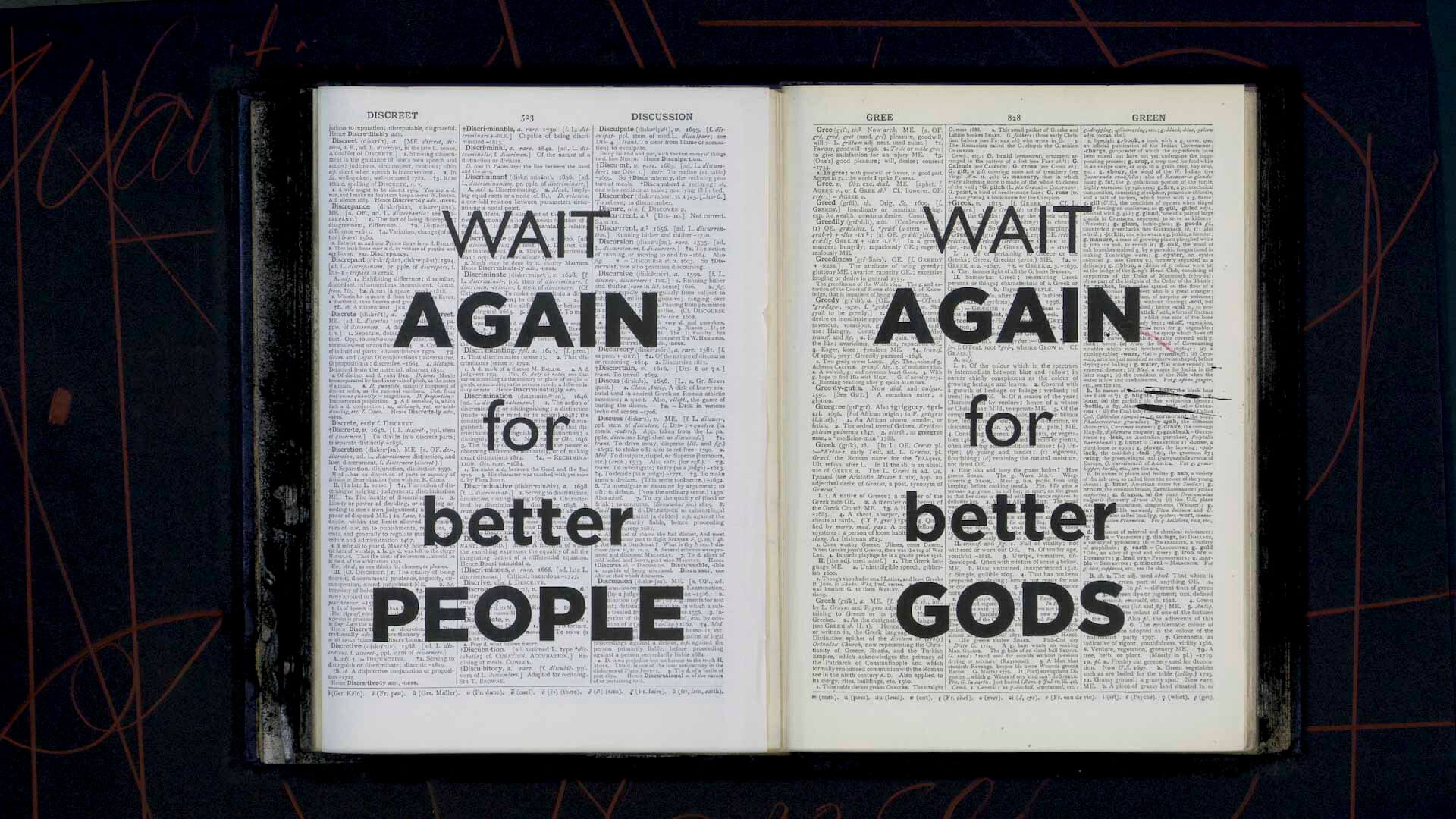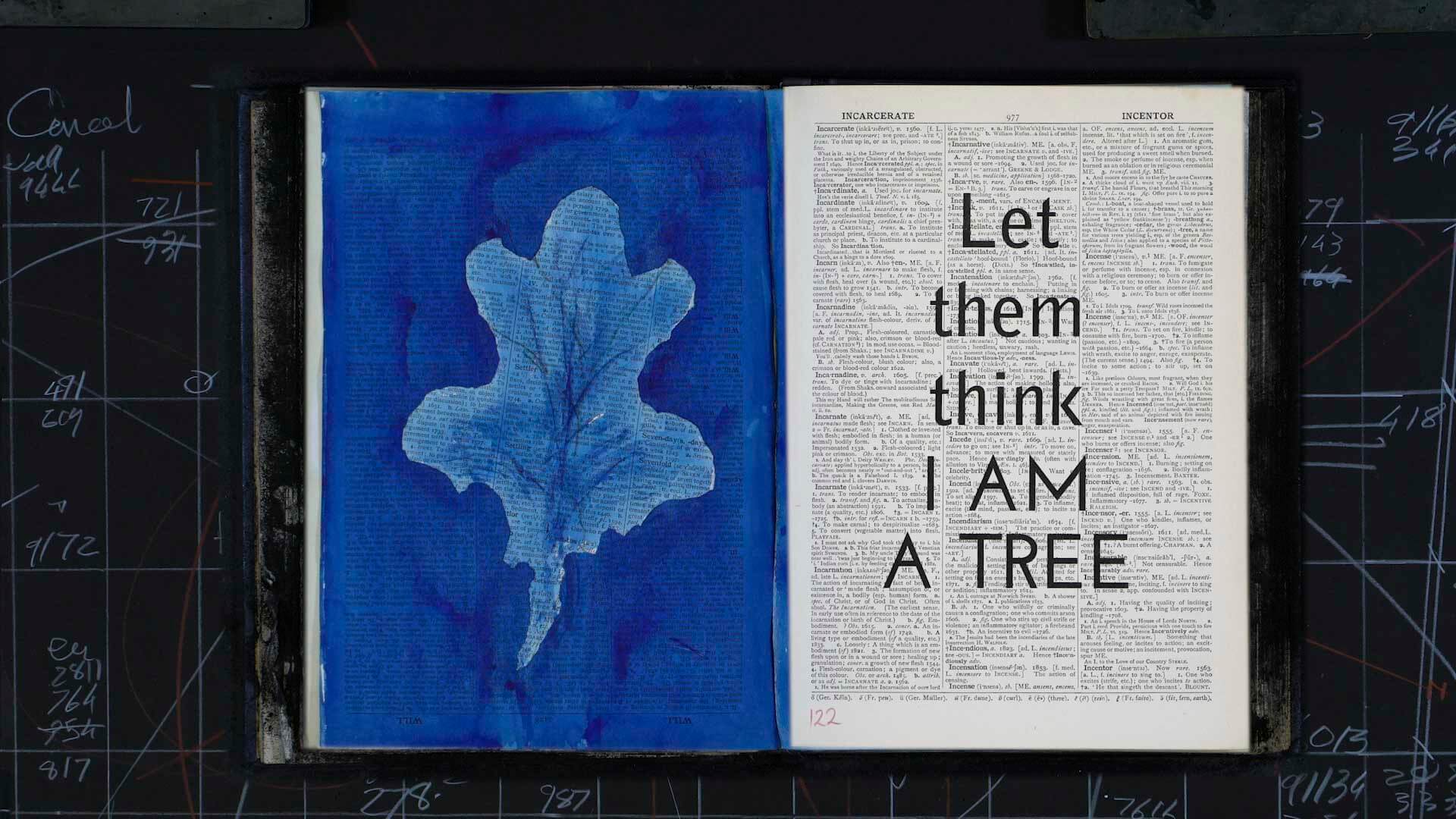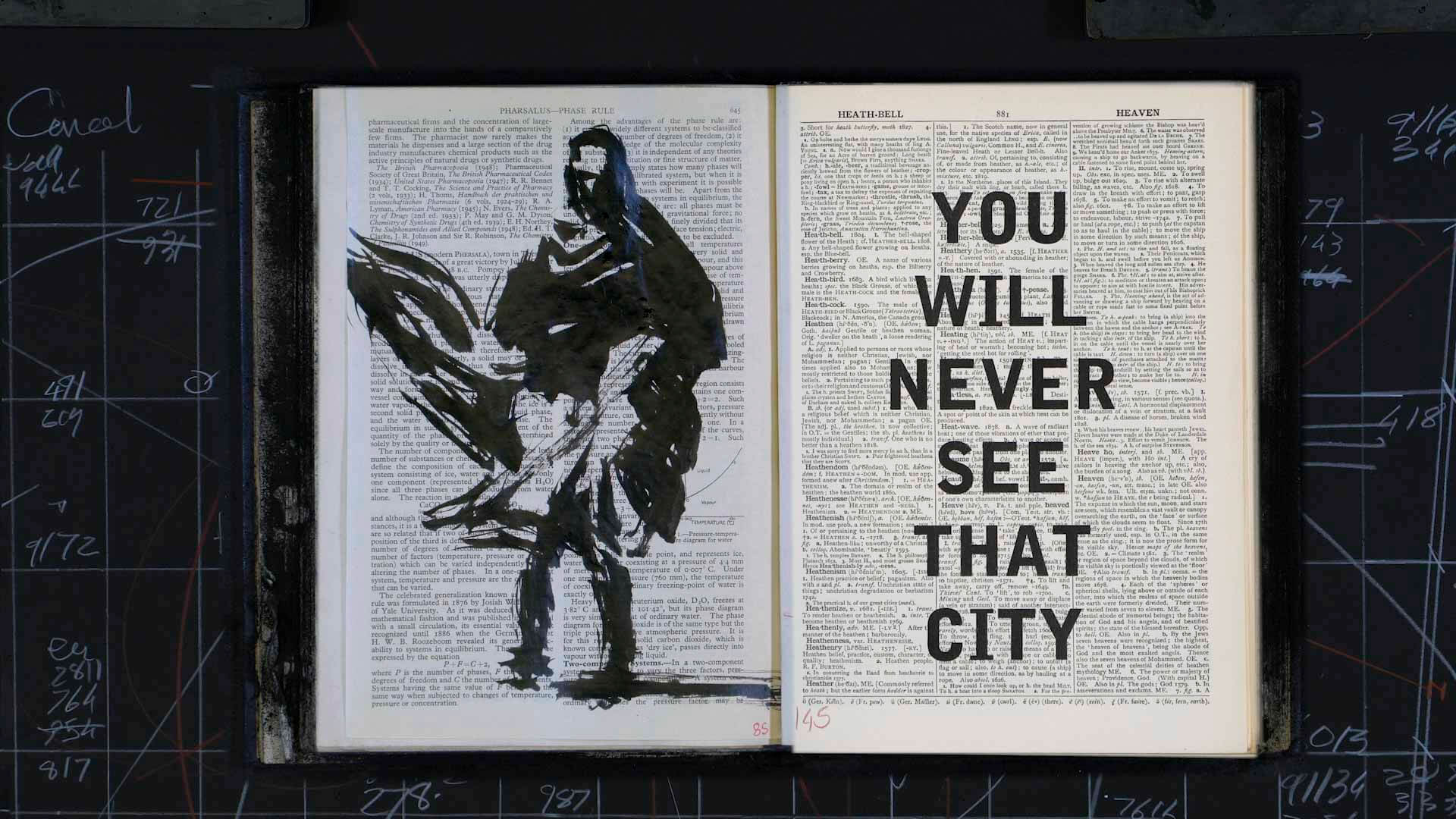Inspired by the movement and by the rotation of Calder’s artworks, Kentridge evokes the priestess mentioned by Dante: the Cumean Sibyl, who used to write her prophecies for people’s destinies on oak leaves. The leaves at the mouth of her cave were scattered by the wind, confusing the destinies of those who came to fetch them. This image becomes a symbol of uncertainty and of time that flows, mutates and returns.
In the eponymous video, a flipbook animation made of a sequence of ink and charcoal drawings, the contemporary Sibyl has been portrayed as an African dancer. The figure dances against book pages accompanied by vocal compositions by Nhlanhla Mahlangu. Drawings in Indian ink describe trees with black branches and leaves that mutate and change. Kentridge notes that the contemporary equivalent of the Sibyl is the algorithm, which relentlessly predicts our fate.
In contrast the images, drawn on pages from found books or from Dante’s Divine Comedy, show trees, leaves, animated objects, coloured geometrical forms and dancing silhouettes in mutation. They bring new life and humanity to the attempt to discover our own fate and to the feelings of fear and anxiety that result from it.
Single channel HD film
Duration 9’ 59’’
Edition of 9
Still from video
Courtesy Galleria Lia Rumma
Milan/Naples
